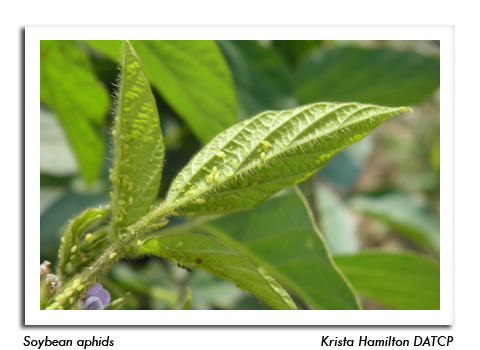
 |
|
|
Soybeans
Volume 57 Number 17 Date 08/09/2012 SOYBEAN APHID - The annual survey is partially complete and results for the period of July 23-August 1 show extremely low populations throughout the state. Only one of the 159 fields examined had an economic density of 260 aphids per plant, two fields had 38-56 per plant and the remaining 156 fields had fewer than five aphids per plant. The state average during the late July portion of the survey was three aphids per plant, the lowest in the history of the survey. A follow-up evaluation is planned for August 13-24 to assess changes in aphid populations and where late-season control may be required. As most fields enter the later reproductive growth stages, it appears that the two-spotted spider mites, and not soybean aphids, have been the primary insect threat to the state's soybean crop this year. JAPANESE BEETLE - This insect is still very common in soybeans in the southern and western parts of the state, where it is contributing to general defoliation levels. Damage has intensified and is now moderate to severe in a few fields. In Buffalo, Chippewa, Columbia, Dane, Dodge, Eau Claire, La Crosse, Monroe and Trempealeau counties, defoliation rates ranged from 5-25% in the past two weeks. WHITEFLY - Infestations have been observed in fields from Dane to Dunn County. This common pest of greenhouse plants and commercial vegetables is remarkable for its high reproductive potential and capacity to develop resistance to insecticides. Although yield reductions resulting from sap removal, sooty mold and incomplete pod filling have not been documented in Midwestern soybeans, economic damage has been reported from the southeastern United States. GREEN CLOVERWORM - Larvae of various sizes are causing light defoliation of soybeans in the southern and western counties. Damage is common, but not especially severe. Circumstances thus far have not justified treatment. --Krista Hamilton, DATCP Entomologist 





|
|
|